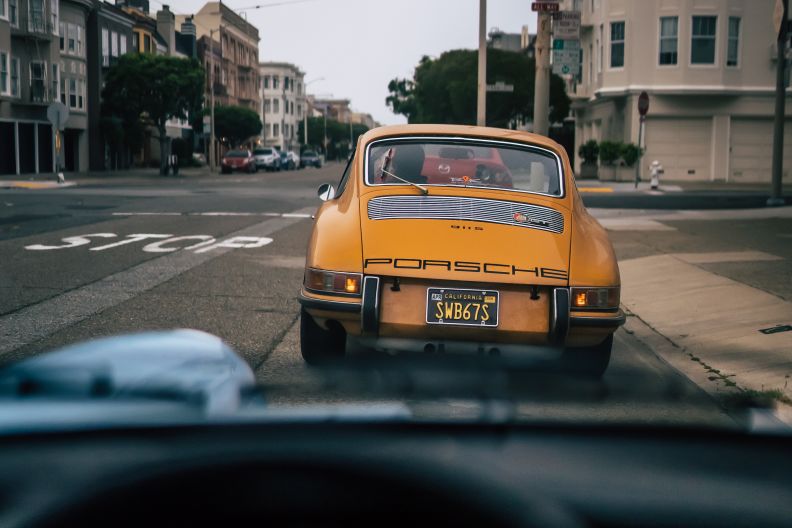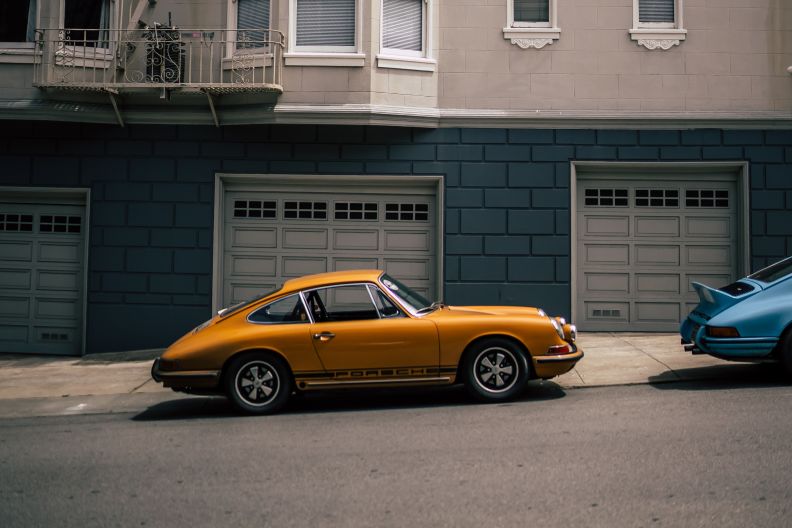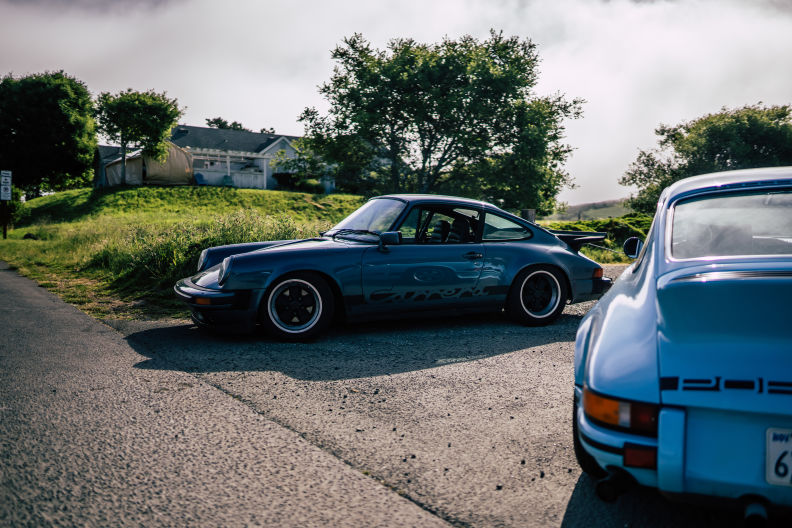Feature
Sibling rivalry: Driving three iconic Porsche 911s
Written by Justin Roeser, Photography by Shayan Bokaie
Sometimes, a stereotype exists because it’s true. Take, for example, children’s birth order: eldest siblings typically have all the firsts; middle children try like hell to differentiate themselves from their siblings; and the youngest – while missing out on much of the attention as they were growing up – nevertheless gain valuable life lessons…provided they pay a little attention to their older siblings.
So it is with the trio of iconic Porsche 911s with us today: a 1967 911S, a 1973 2.7 RS, and a 1976 Carrera 3.0, which we recently brought together for a family reunion out on the road. And yes, I’m here to tell you that the stereotypes about birth order hold up. These 911s may all come from the same family tree, but they have certainly branched off in their own direction and created unique niches for themselves.
Photographed by Shayan Bokaie
Products of their time
1967 Porsche 911S
Back in 1965, Porsche debuted the 911, a dapper little car with chrome wheels and a wooden dash, as a successor to its 356 model, which had been in production since the early 1950s. The late-1960s, however, were a time of psychedelics, rock gods and goddesses, and a new counterculture seeking change. Goodbye Ricky Nelson, hello Jimi Hendrix. Young minds were open to experimentation and the Porsche factory signed on for the cause when it created the 911 “Super.” The team in Stuttgart was ready to tune in, turn on, and give drivers something a little wilder. And with a healthy bump in horsepower, forged mag wheels, and stiffer suspension bits, the 911S was a cultural noise all its own. The 2.0L “S” engine reached peak power at 6600 RPM and the car weighed just under 2,300 pounds. Compared to the muscle cars of the era, this song was the exact opposite of Detroit’s heavier, no-replacement-for-displacement rock-n-roll.
Dating back to the early 356s, Porsche cars and their owners have always found a second home at the track and from the day it debuted, the 911S was a competitive club racer. Alan Johnson and Roger Bursch wasted no time in claiming the SCCA’s Class C Production Championship with their 1967 911S. Meanwhile, across the Atlantic, another 1967 911S won the Targa Florio, while legend Vic Elford won the European Rally Championship in a 911S. Porsche had racing in its DNA from its earliest days, but the 911S showed the world that the Stuttgart factory had designs on even greater glory.
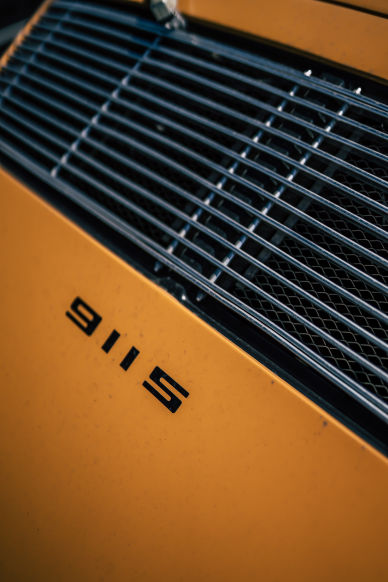

Photographed by Shayan Bokaie
To the untrained modern eye, the 1967 911S is classy and approachable. Small, and colorful, its bug-like shape and cartoon eyes seldom fail to make young children point and smile. Take this car into a corner at speed today, though, and one word will come to mind: “sleeper.” Fifty-five years after it was built, the 911S continues to reward a driver who acts like they’re running from the cops – and who has the guts to find this car’s limits. With skinny tires and a thirst for high revs, the short-wheelbase 911S requires a confident driver who can push the limits as Stuttgart intended. To achieve and maintain those high RPMs and keep the power at hand, the driver will want to master the art of trail braking. A light and powerful car like the 911S responds well to late braking and dances through corners like a ballerina, rewarding a confident driver who maintains a consistent, weighted foot on the throttle.
1973 Porsche 2.7 RS Carrera
Only a few short years after the 911S debuted, however, the good times seemed to be over. By 1973, the world was in an oil crisis, the US was stumbling toward the exit in Vietnam, and inflation was running at 7% in the US and Europe – hardly the ideal time to introduce a new high-performance sports car. And yet that, in a penny-pinching move, is exactly what Porsche did. Convinced that the 911 was the race car for the marque, Porsche’s management figured that by homologating the 911, Porsche could save money by not developing pure race cars like the 917. Unlike its elder brother (the 911S), then, the “RS” (for Renn-Sport) was lab-bred for competition. It was lighter, wider, more aerodynamic, and more powerful than the 911S – the perfect entrant for Group4 racing.

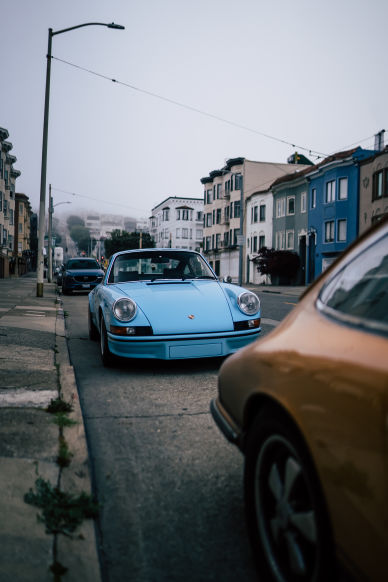
Photographed by Shayan Bokaie
Unlike the 911S, the RS didn’t have to work its way up through the ranks of grassroots racing. In fact, the RS was considered by many to be a collector piece the minute it rolled out of the factory and a considerable number were immediately put away in collections. Those that did race, however, made their presence known. They were competitive in rallies, hill climbs, and endurance racing. As a further flex, Porsche also injected a few RS cars with anabolic steroids and turned them into RSRs. The RSR’s dominated 1973 by winning the Daytona 24 Hours, Sebring 12 Hours, the Targa Florio, and 2/3rds of the European GT Championship podiums. The RSR weighed nearly 200 pounds less than the lightweight version of the 1973 RS, while the RSR’s race spec 2.8-liter engine produced 300 horsepower at a raucous 8000 RPM.
Porsche planned to homologate only 500 RSs, but demand was so high that Porsche tripled that number by the end of production (1,580 in total were built, of which 55 were RSRs). While the car may have initially been an exercise in bean-counting, the RS turned out to be the high point for Porsche in the 1970s. Indeed, you’ll find plenty of people who argue that it was the high point for Porsche period.
While the 1973 2.7 RS certainly has a classiness of its own, it lacks the elegance of its elder sibling. With its lower stance, its ducktail, its staggered Fuchs wheels, and its “Carrera” tattoos on the sides, this is the boxer of the family. And just like a good fighter, this one is ready to brawl. If you didn’t know anything about the car before driving it today, you would be hard pressed to imagine that it dates to the early 1970s. Its long wheelbase aids in top speed (the RS can steadily cruise in triple digits all day long), even as its welded chassis and stiffer suspension hold the car firmly to any road surface earth might toss your way. This car, to put it bluntly, feels like a proper race car: the steering is scalpel-sharp, with even the softest touch making the car move (and perhaps inspiring overconfidence when driving hard), while the mechanical fuel injection adds snaps, cracks, and pops to the environment when under heavy acceleration. Quite simply, you could dissect this car, lay it out piece by piece and examine every part, but you would still miss what makes this car special: it has the soul of a fighter.
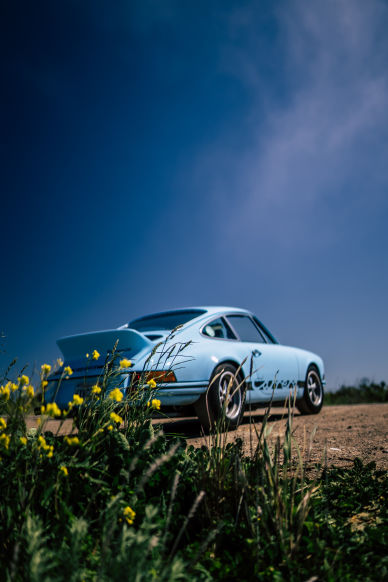
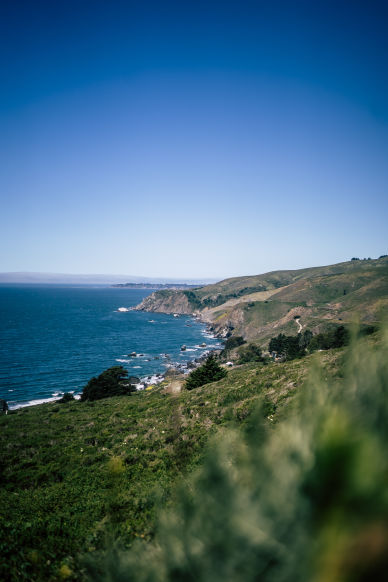
Photographed by Shayan Bokaie
1976 Porsche Carrera 3.0
As if oil crises, wars, and inflation hadn’t been enough of a buzzkill, in 1974 the U.S Department of Transportation began mandating the impact bumper and the U.S. EPA implemented stringent new emissions standards. This regulatory combo created not only a design challenge, but also a performance compromise for any automotive manufacturer seeking to do business in the USA. Europe, however, did not follow the same strict emissions that the U.S adopted in the mid-1970s, which led to a divergence in the Porsche models available on each side of the Atlantic. Unlike European Carreras, U.S.-market cars received a new continuous injection fuel delivery system (CIS) and exhaust gas after treatment, a noose that reduced the U.S.-market engine output by over 20%.
The Europe market-1976 Prussian Blue Carrera 3.0 that you see here marks both the end and beginning of a new era for Porsche. The Carrera 3.0 is the Cinderella between the 1974-1976 European 2.7-liter, mechanically fuel injected (MFI) Carreras and the soon-to-be standard continuous injected 911SC. The Carrera 3.0 kept the flared rear arches and optional whale tail from the 1975 Carrera, but Porsche bumped up the engine displacement to 3.0 liters. The Carrera 3.0 powerplant is essentially a non-boosted, higher compression CIS version from their top-of-the-line supercar, the 930 Turbo. The flywheel and crankshaft were inherited from the previous 2.7 RS, which created an engine with more low-end torque than the 1973 RS. While horsepower for the 3.0-liter was down by about 5% relative to the 1973 RS, acceleration times were nearly identical between the two.
For years, the “midyear 911s” (so-called because they were produced in the mid-1970s) have been the “entry-level” 911 for many air-cooled enthusiasts, even as they were overlooked by those with the resources to chase earlier cars. All of this meant that the 1976 Carrera 3.0 has long been the underdog of the family but, like all midyear 911s, it, too, has been climbing in value as earlier generations of 911s became ever more expensive. Notably, the Carrera 3.0 is the last low production, impact bumper 911 available to customers (at least, in any real numbers) until 1988’s Club Sport, and even that car – with only 340 units available – wasn’t exactly a mass-production econobox.
Photographed by Shayan Bokaie
In addition, these midyear 911s had their own racing glories. In 1978, one year after production had ceased on the Carrera 3.0, Jean-Pierre Nicolas and his Carrera 3.0 took home first place at the Rally Monte Carlo. That same year, the Porsche factory entered two 911SCs in the East African Safari Rally and placed 2nd and 4th overall. It was, in fact, it is later, rally-prepped 911s like these that, more than anything else, have inspired the latest resurgence of the “Safari” style 911s.
And one drive in this car reveals that these Carrera 3.0 cars share their siblings’ DNA. Torque in the Carrera 3.0 builds smoothly and peaks at 4,100 RPM (compared with the standard 2.7-liter motor, which reaches peak torque at 5,100 RPM) and the Carrera 3.0 reaches top horsepower at 6,000 RPM (compared to the 911SC, which finds peak power at 5,500 RPM). This unique powerband might have been the reason Porsche’s engine guru Hans Mezger kept one in his garage from 1979 until his passing in 2020. True to its era, the Carrera 3.0 has the same lightweight feel and nimble steering that characterize 1970s Porsches, while its wide quarter flares – and the 8” rear and 7” front wheels that those flares conceal – help handle the road.
While a mere nine years passed between the debut of the 1967 911s and the 1976 Carrera 3.0, the world that greeted them at birth could not have been more different. And yet, Porsche kept the family together and raised these kids with a core set of family values, even as they let their unique gifts shine through. Now grown into middle age, these children of Stuttgart live very different lives. The eldest, our 911S, is aging gracefully and is now comfortably retired, enjoying special outings and the odd weekend morning coffee run. The middle child, our 2.7 RS, had a successful career and accumulated a rabid fanbase over the last several decades, so it’s now hard for this car to get out in public without attracting a little too much attention. The youngest, our Carrera 3.0, meanwhile, was a little slow to come into its own but is now making the most of its late-bloomer status. Yet, for all their differences in upbringing and personality, one tie continues to bind these three siblings together: they have each made their parents back in Germany very, very proud.
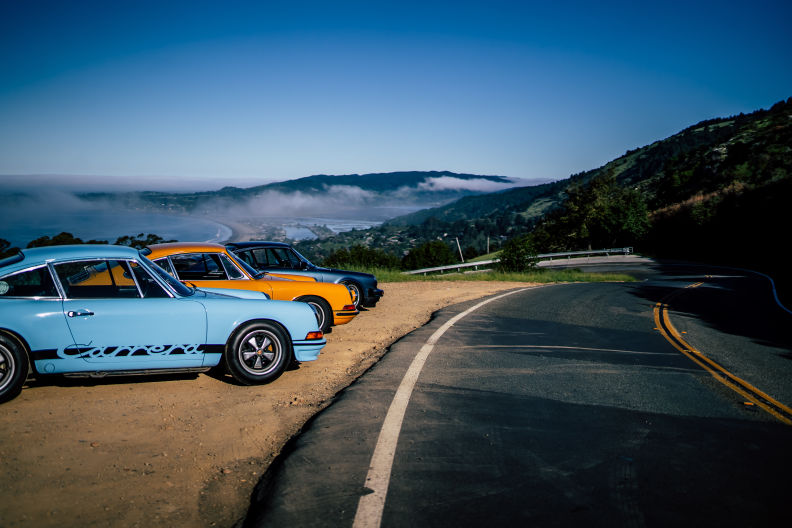
Meet our contributors
Born in Seattle, Washington, and now residing in San Antonio, Texas, Justin Roeser has spent most of his life around European cars. For the past 15 years he’s been an avid hunter of rare, unique, and colorful Porsches. When not on the hunt, you can find Justin combing record crates and spinning vinyl out and about town. Follow him on Instagram at @33bosshog.
Comments (...)
What to read next
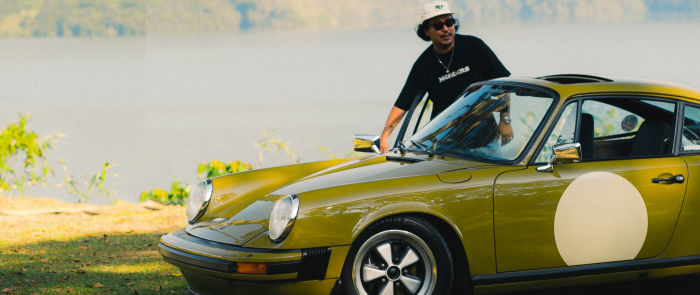
This Malaysian Porsche 911 went from scrapheap to showstopper
0 comments
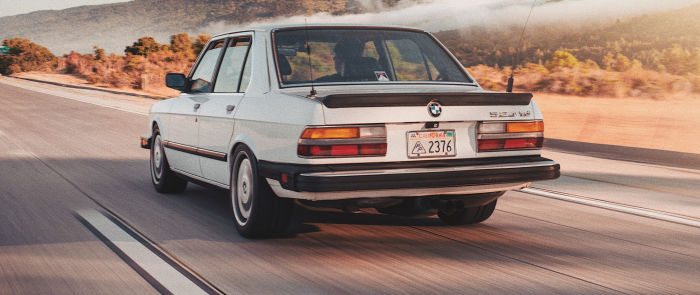
Enthusiast Roundtable: The BMW E28 is a classic driver for the modern world
0 comments
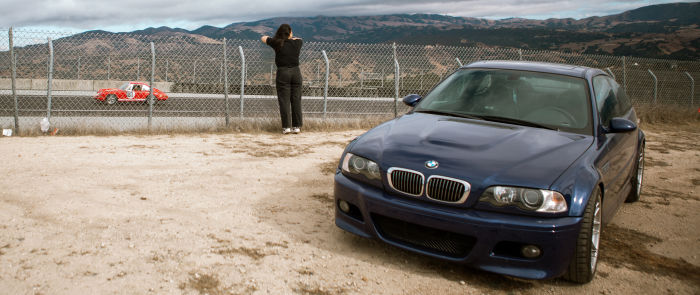
How Rennsport Reunion 7 transcends Porsche as the ultimate enthusiast gathering
2 comments
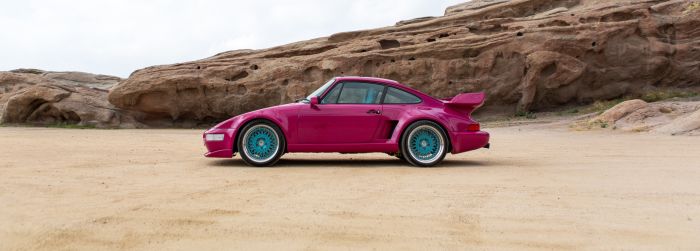
Meet a few of Porsche Classic's finest winners from this year's Restoration Challenge
0 comments
Suggested listings
Before you get started
Please verify your account. You can do so by clicking on the link in the email we sent you.
Can't find your verification email? Click to resend it.
This website uses cookies. We do this to better understand how visitors use our site and to offer you a more personal experience. We share information about your use of our site with social media and analytics partners in accordance with our Privacy Policy. Additional information for California residents


